Robert Leckie: What are the main issues or themes in your practice?
Hyesoo Park: Just ordinary people, particularly in South Korea, who are tired or have lost their purpose in life. I want to know why they work so hard every day, and in different ways to me as an artist. I have the impression that they are often adopting the roles and lifestyles they think they should, based on their peers and the societal expectations of others. I find these strict codes of behaviour difficult to live with because I want to enjoy life. In South Korea, happiness and satisfaction seem to be based on competition, and though people get hurt and angry about this they aren’t open with their feelings.
RL: With this in mind,how is it for you to be in London? How do the responses to your work differ?
HP: I tried to look for similarities and differences between life in London and Seoul. In the UK people seem to care about culture. I see advertisements all the time for theatre plays, art exhibitions and music events, and the government seems actively involved in promoting culture. Adverts in South Korea are only about aspirational things like borrowing money and the beauty industry. These are displayed in public places and inevitably effect people’s outlook on life. Working against this, I think that art plays an important role in well being. I also notice a number of similarities between South Korea and the UK, in particular how busy people are in both countries, though people here seem to know how to enjoy themselves. I’ve also met a lot of South Korean students and artists here who are worried about their futures. I consider myself very fortunate that I’m able to continue to work as an artist. I’m thinking a lot about the South Korean community in London, and the students I teach who want to go to abroad to study.
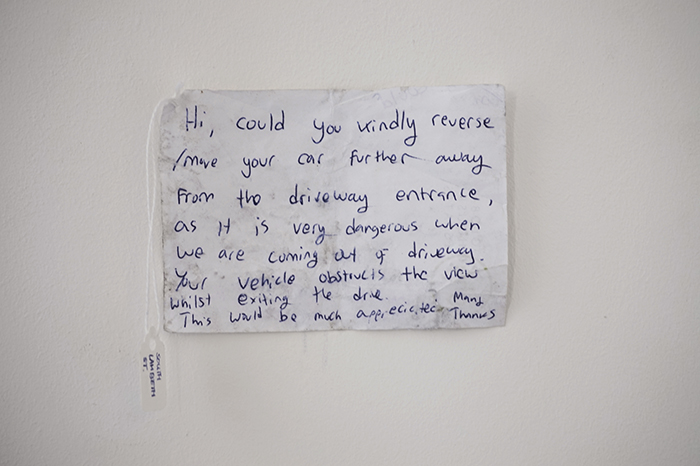 |
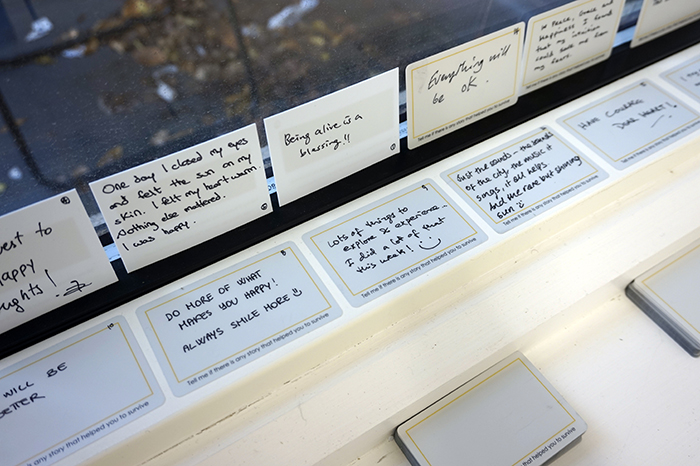 |
RL: Could you talk about the materials you use?
 |
 |
 |
Gloomy Monday, City Poem(worry inside pocket), the material 1000 origami crane of works 'Love Story'
RL: Please could you describe your work Gloomy Monday(2015), which you presented during the Open Studios?
As you say, the work is called Gloomy Monday. It is made up of stitched-together clippings from several Monday editions of The Guardian newspaper, producing sheet music for a wind up music box. The music is very melodic and positive, but is made by punching holes to remove all of the many negative words or sentences from these articles.
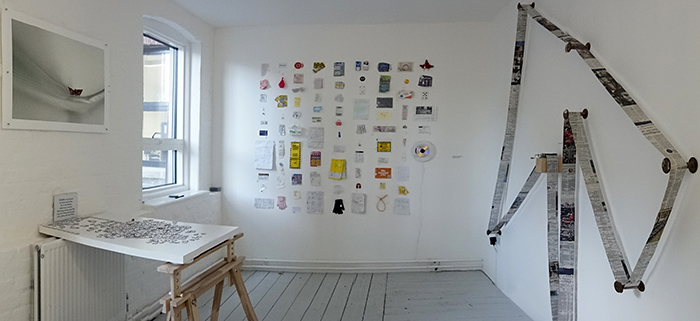
RL: What about the works you’ve made that focus on love and relationships? These often stem from questionnaires and surveys that you carry out, in which you ask people to reflect on the breakups or relationship difficulties they’ve been through.
HP: My interest in love came from my survey work 'the dream you thrown away'(2011), in which I asked people ‘what dream did you give up?’ I was surprised to find that one of the most common answers was a lost love. In South Korea, it’s very common to get married between your mid-twenties to early thirties. Older people are always asking me when I’m going to get married, or why I have not gotten married. So I started to think a lot about marriage and the related social pressures.
There is also a very high divorce rate in South Korea, and many of my friends are separated. When I ask them about their relationships, their partner choices seem to have been based more on wealth and status than love. One of the motivations for these works came from the question ‘is love still possible in marriage?’, at a time when many seem to only be concentrating on making money.
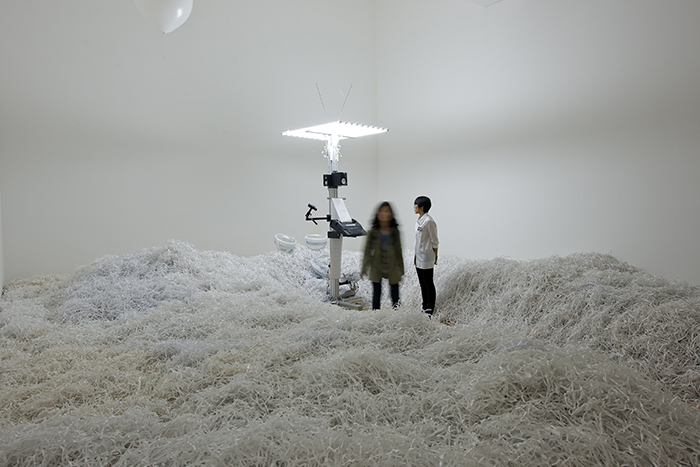 |
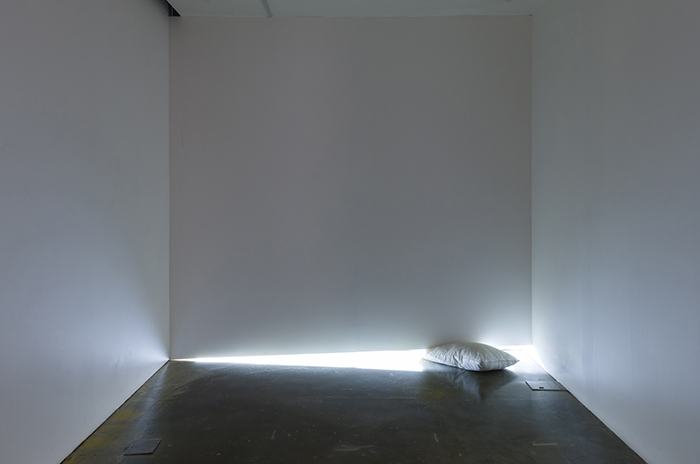 |
Dream Dust(2011), H.E.L.P(2016)
RL:
In general, I think we need more varied lifestyles, and I want to show the variety of life. By focusing on stories of broken love and failed relationships, I try to show how different people can be. I think Korea has very strict and closed society, but it’s important to listen to other people’s opinions and have an open mind.
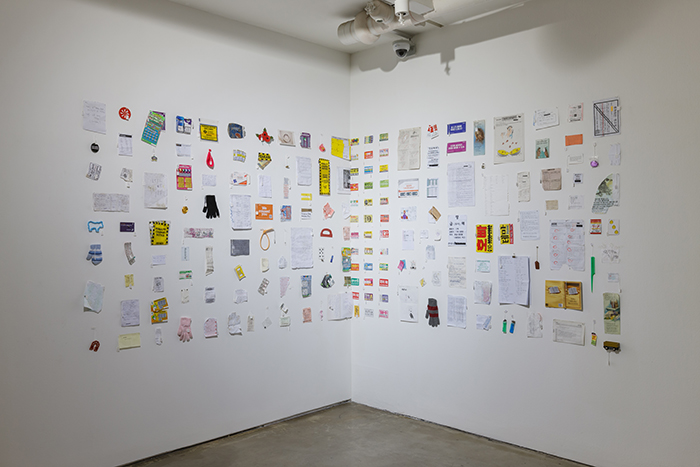
RL: What is the significance of the origami cranes in your work?
HP: This work is a continuation of a project called Goodbye to Love(2013-15), which began when I accidentally bought 1000 folded paper cranes on eBay. In South Korean culture, the crane represents good luck and longevity, and is believed to live for 1000 years. Folded paper cranes are a common gift between lovers to give good fortune to a relationship. The cranes I bought were a gift given to the seller by an ex-boyfriend, and I was very surprised at how little I was able to pay for it, this gesture of love.
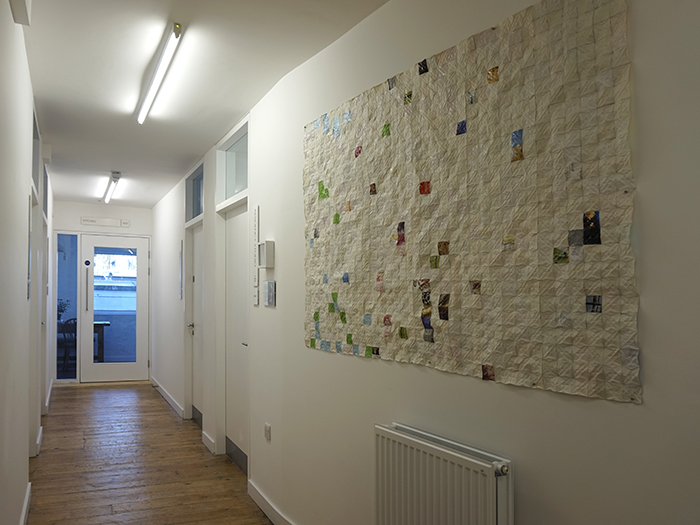
Love Story, 2015, 1000 orgami cranes purchased from the auction (Korean ebay), 170x117cm
RL: Another work you’ve made during your residency is a jigsaw puzzle. Why did you choose to work with this format?
HP: : This is the first time I’ve worked in this way. I made it because I wanted to have a more direct relationship with the audiences that visited the Open Studios, so we could solve the puzzle together and talk to each other while we were doing it. A lot of what I was working on focused on negative aspects of life and I wanted to think about work in a more positive way. The poem that’s printed on the puzzle is called Quest by Anna Wickham. It has a very uplifting message and alludes to the search for happiness and fulfillment in life. The idea is that, as we piece these positive words together, I can ask visitors about themselves and their experiences based on the poem’s message
|
|
 |
HP: : Yes, audiences here in London have given me new ideas already, and this interaction with others always forms the basis of new works. The most important thing for me is that I hope the public can connect with my work, or that it reminds them of someone or something in their own lives.
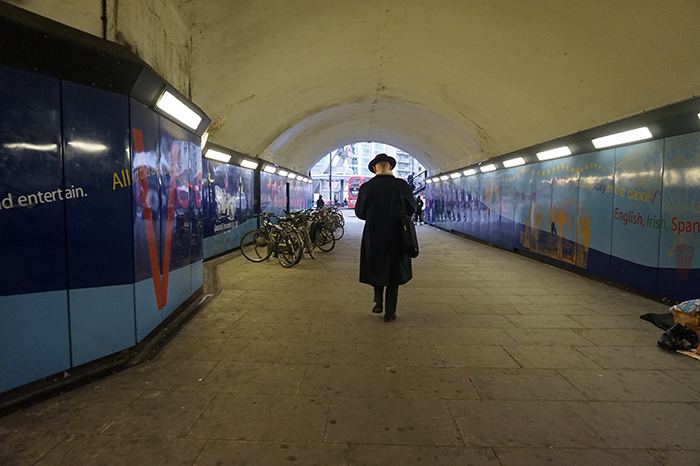 |
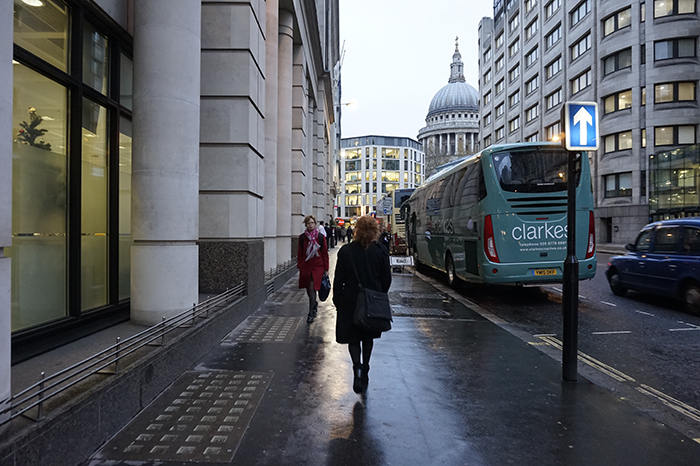 |
RL: I n that sense your works are like provocations, they start conversations, or make people think and reflect.
HP:: I hope people take something away with them, which they keep, such as a thought that allows them to focus on their lives in a more positive way.
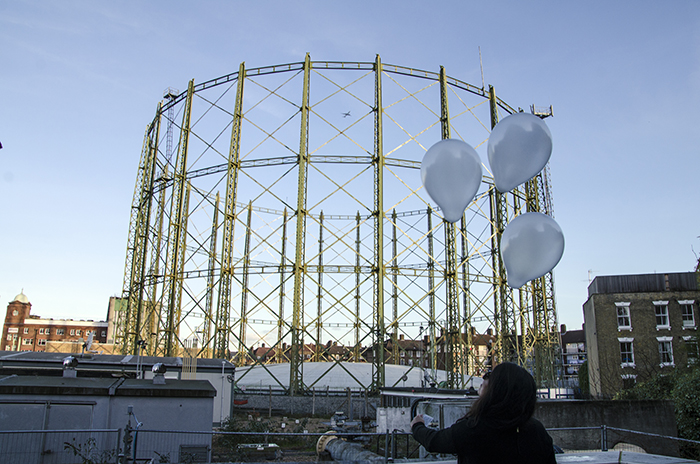
Life Piece(2015, Gaworks.UK)
